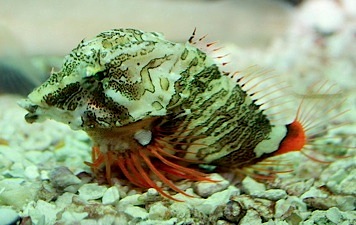The grunt sculpin or grunt-fish, Rhamphocottus richardsonii, is the only member of the fish family Rhamphocottidae. It is native to temperate coastal waters of the North Pacific, from Japan to Alaska and south to California where it inhabits tide pools, rocky areas, and sandy bottoms at depths of up to 165 metres.
It uses its spiny pectoral fins to crawl over the sea floor. It grows up to 9 cm in length. It frequently takes shelter in discarded bottles and cans, as well as the empty shells, such as those of the giant barnacle (Balanus nubilis). During reproduction, the female chases a male into a rock crevice and keeps him there until she lays her eggs.
(From Wikipedia, 19 September 2011)
Inhabits intertidal areas and to 165 m depth, in tide pools and rocky areas but also sand bottoms (Ref. 2850). Frequently observed taking shelter in empty shells, including those of the giant barnacle, Balanus nubilis, and discarded bottles and cans (Ref. 48784). Young feed on zooplankton and invertebrate and fish larvae; adults feed also feed on crustaceans (Ref. 28499). May use its pectoral fins to crawl over rocks and seaweed (Ref. 6885).
(From EOL, 19 September 2011)





